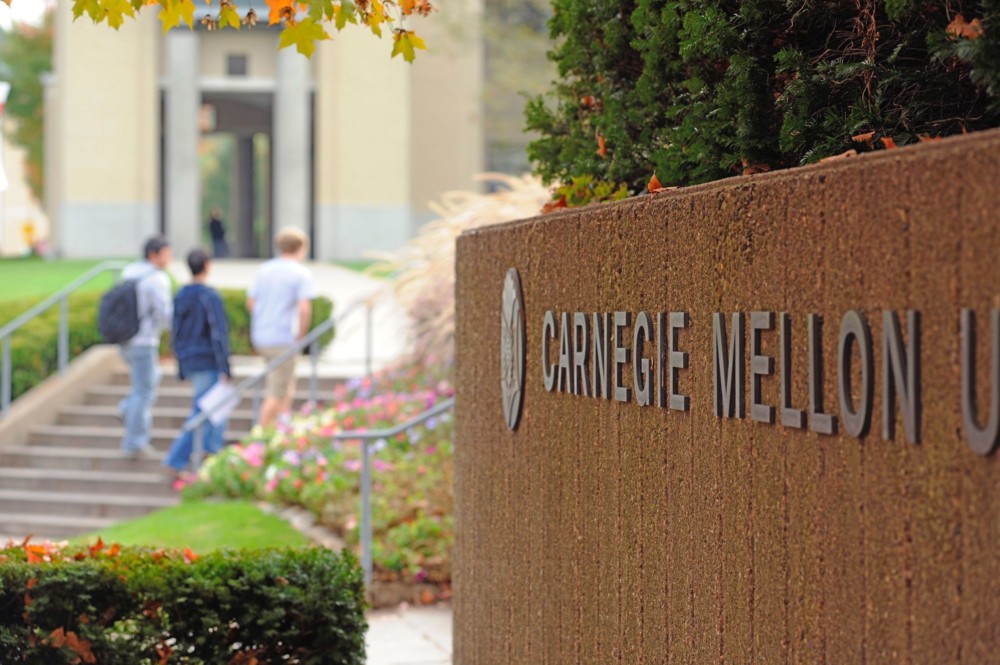By Debra Erdley
Tribune-Review, Greensburg, Pa.
WWR Article Summary (tl;dr) Once the beleaguered stepchild of business education programs, entrepreneurship has grown exponentially. From a modest start at Carnegie Mellon University, which launched the nation’s first formal university entrepreneurship education program in 1971, the Ewing Marion Kauffman Foundation found it had grown to include more than 5,000 courses at universities across the United States by 2008.
Tribune-Review, Greensburg, Pa.
Melanie Ansell knew a good idea when she heard it.
The idea just kept getting better as Ansell, a grandmother and former bank president from Derry, now a student at Seton Hill University, and her fellow teammates in professor Lyzona Marshall’s entrepreneurship seminar polished their concept for Sensor4Safe, an app that will alert drivers if they’ve left a child or pet in a hot car.
The team that also includes three 21-year-old Seton Hill seniors — Fitzgerald Robertson, a business major from Brooklyn, N.Y.; Austin Sheridan, a business major from New Brighton; and Dhiraj Totwani, a graphic design major from St. Thomas, Virgin Islands — won a slot to pitch at e-Fest, a national entrepreneurship contest in Minneapolis, April 6-8.
They will compete for a slice of $250,000 in prize money against 25 teams from some of the nation’s top-ranked college entrepreneurship programs, including Babson College, Johns Hopkins, the University of Wisconsin and Drexel.
Once the beleaguered stepchild of business education programs, entrepreneurship has grown exponentially. From a modest start at Carnegie Mellon University, which launched the nation’s first formal university entrepreneurship education program in 1971, the Ewing Marion Kauffman Foundation found it had grown to include more than 5,000 courses at universities across the United States by 2008.
Carnegie Mellon officials credit the discipline with seeding Pittsburgh’s economic recovery.
“At Carnegie Mellon, we’re pretty good for spinning off between 30 and 40 companies every year. And over a number of years, that adds up to a significant number of jobs and companies,” said Dave Mawhinney, a serial entrepreneur who heads CMU’s Swartz Center for Entrepreneurship.
No longer is entrepreneurship the sole province of business majors and engineers. Marshall said her classes at Seton Hill attract a cross-section of students from business and marketing majors to art, dance and science students.
“Entrepreneurial education has evolved to where we’re looking at it as a discipline that solves a problem. At Seton Hill, it is the underlying approach to how our students approach their lives and careers. I suggest they look at themselves as a business. For instance, if you’re an art major, how do you sell yourself as an art director for a museum?” Marshall said.
She pitched the e-Fest competition to her students in January. They had 2 weeks to come up with a pitch.
Seton Hill’s winning team wanted to tackle a real-world problem. Research pointed them toward children who die in hot cars.
“We saw a lot of statistics that 38 kids a year die in hot cars, and it’s 100 percent preventable,” Sheridan said.
Thus began the research that culminated in a seven-minute video and 15-slide PowerPoint presentation of the team’s pitch for a device they hope will become standard in cars.
“In the video, we used my granddaughter’s baby doll and car seat,” Ansell said. She declined to give her age, saying only that she’d had a broad career, including stints as a bank president and controller for multiple corporations before returning to school with the goal of teaching business at the college level.
The team’s brainstorming sessions have given way to lengthy conversations with engineers and lawyers, as the group polishes the concept with a goal of presenting a prototype in Minneapolis. Their ultimate goal: to bring the device to market at an affordable price.
“We want to make it super, super easy and affordable — something someone could install in the car that would be passive with no input needed from the end user,” Robertson said.
Totwani, the graphic design major, has helped them envision the finished product and added his touch to the effort.
Back at Carnegie Mellon, Mawhinney said researchers found that diverse talents make for great entrepreneurial teams.
“We like to say the ideal team is a hacker, a hustler and a designer. The hackers are the technical people, the hustlers are the business people and the designers are the people who glue it all together and make it work,” Mawhinney said.
Teams competing at e-Fest will have a chance to hear from real-world figures whose entrepreneurial talents have yielded significant returns. Richard Schulze, founder and chairman emeritus of Best Buy, and “Shark Tank” regular Daymond John, founder of clothing company FUBU, will be keynote speakers at the event.
The teams with the three best business ideas will receive 0,000, ,000 and ,000 in prizes, with additional grants going to their universities to support entrepreneurship education.
buy zenegra online herbalshifa.co.uk/wp-content/themes/twentytwentytwo/inc/patterns/en/zenegra.html no prescription
Marshall is excited about how far the Seton Hill team has come since January.
“Our students have a passion for entrepreneurship that they take beyond the classroom,” she said.














































































































































































































































































































































































